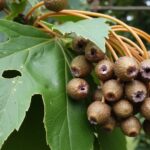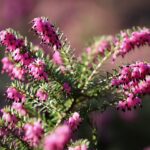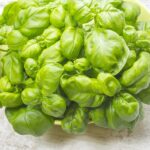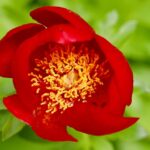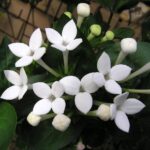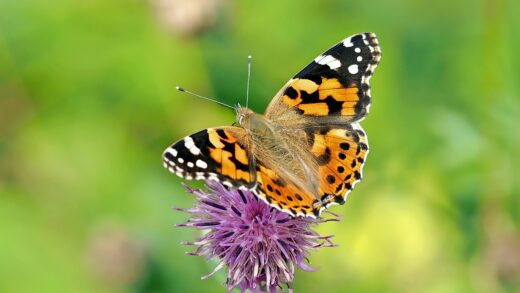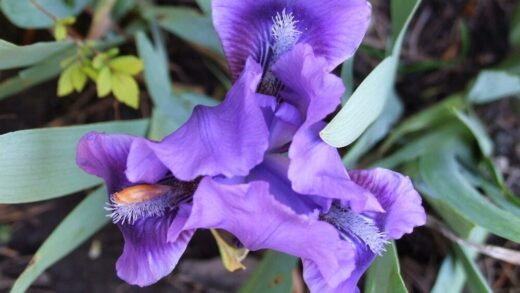Erica carnea is a robust and generally trouble-free plant, renowned for its resilience and low-maintenance nature. In a suitable location with well-drained soil and good air circulation, it is seldom troubled by serious diseases or pests. Most of the problems that do arise are not caused by primary pathogens or insects, but are secondary issues stemming from poor growing conditions. The most significant threat to the health of alpine heath is, without question, root rot caused by waterlogged soil. Therefore, the best defense against diseases and pests is a proactive approach focused on providing the plant with its preferred cultural conditions. By understanding the link between environmental stress and plant health, gardeners can prevent most issues from ever taking hold, ensuring their heaths remain vigorous and beautiful.
The foundation of a disease and pest management strategy for alpine heath is prevention. This begins with selecting a planting site that offers full sun and excellent air movement. Sunlight and circulating air help to keep the foliage dry, creating an environment that is inhospitable to the development and spread of fungal spores. Equally important is the meticulous preparation of the soil to ensure sharp drainage. Waterlogged soil not only suffocates the roots but also creates the perfect breeding ground for water-mold fungi like Phytophthora, which are the most lethal pathogens for this plant.
Maintaining good garden hygiene is another simple yet effective preventative measure. Regularly remove any weeds that grow up through the heath, as they can restrict airflow and compete for resources. It is also wise to clear away any dead leaves or other garden debris that can accumulate around the base of the plants, as this material can harbor fungal spores and provide a hiding place for pests. Pruning the plant annually after flowering not only keeps it compact but also removes the old flower heads which could potentially harbor disease.
When problems do occur, early detection and identification are key to effective management. Regularly inspect your plants, paying close attention to the base of the stems and the undersides of the leaves. Look for any signs of discoloration, wilting, webbing, or the presence of insects. By catching an issue in its early stages, you can often resolve it with simple mechanical or cultural controls, such as pruning out an affected branch or using a strong jet of water to dislodge pests, without having to resort to chemical treatments. A healthy, well-sited plant is its own best defense, and intervention should always be the last resort.
Proactive measures for disease and pest prevention
The most effective strategy for managing diseases and pests on alpine heath is to create an environment where they are unlikely to thrive in the first place. This proactive approach begins with the selection of healthy, vigorous plants from a reputable nursery. Inspect plants carefully before purchase, avoiding any that show signs of yellowing, wilting, or have visible pests. A strong start with a healthy plant significantly increases its chances of resisting future problems. Once you bring a new plant home, quarantining it for a week or two away from your other plants can also prevent the introduction of any unseen issues into your garden.
Proper planting technique is a cornerstone of prevention. Ensure you plant Erica carnea at the correct depth, with the top of the root ball level with the surrounding soil. Planting too deeply can cause the crown of the plant to rot, creating a major entry point for diseases. Spacing plants appropriately according to their mature size is also crucial. Overcrowding leads to poor air circulation, which traps moisture around the foliage and creates an ideal environment for fungal diseases like powdery mildew and botrytis to flourish.
A focus on soil health is fundamental to plant resilience. A biologically active soil rich in organic matter supports a healthy root system, making the plant more vigorous and better able to withstand stress and fend off potential pathogens. Avoid the overuse of high-nitrogen chemical fertilizers, which can produce soft, succulent growth that is more attractive to sap-sucking insects like aphids. Instead, rely on compost and other organic materials to provide slow, balanced nutrition. A healthy plant, like a healthy person, is simply better equipped to resist infection and infestation.
Watering correctly is another critical preventative measure. As has been emphasized, alpine heath is highly susceptible to root rot. Always water at the base of the plant, avoiding wetting the foliage unnecessarily. Watering in the early morning allows the plant and the soil surface to dry quickly, reducing the window of opportunity for fungal spores to germinate. For established plants, water deeply but infrequently, allowing the soil to dry out between waterings. This practice promotes a deep, healthy root system and discourages the soil-borne pathogens that thrive in consistently damp conditions.
Identifying and managing fungal diseases
By far the most serious disease to affect alpine heath is Phytophthora root rot, a devastating condition caused by a water mold that thrives in poorly drained, waterlogged soils. The symptoms often appear as a gradual decline of the plant. The foliage may turn a dull grey-green, then yellow or brown, and the plant will appear to be wilting, even when the soil is wet. Eventually, entire sections or the whole plant will die. If you inspect the roots of an infected plant, they will be dark, mushy, and easily pull away from the main stem, in stark contrast to the firm, white roots of a healthy plant.
Unfortunately, there is no chemical cure for Phytophthora root rot once a plant is significantly infected. Management is entirely reliant on prevention. This underscores the absolute necessity of providing excellent drainage through proper site selection and soil amendment. If you have heavy clay soil, planting in raised beds or on mounds is the most reliable way to protect your heaths from this disease. If you discover an infected plant, it should be removed and destroyed immediately, along with the surrounding soil, to prevent the pathogen from spreading to other nearby susceptible plants. Do not add the infected material to your compost pile.
Other fungal issues, such as powdery mildew or botrytis (grey mold), are less common on well-sited plants but can occur in humid, stagnant conditions. Powdery mildew appears as a white, dusty coating on the leaves, while botrytis typically affects old flowers and stems, causing them to turn brown and fuzzy. The best management for these diseases is to improve air circulation. This can be achieved by proper spacing at planting time, by pruning back any overhanging vegetation from neighboring plants, and by keeping the area free of weeds.
If you do encounter these foliar fungal diseases, the first step is to prune out and destroy the affected parts of the plant to reduce the source of spores. Ensure your pruning tools are clean to avoid spreading the disease. For persistent problems, horticultural oils or sulfur-based fungicides can be effective, but these should be used as a last resort. The primary focus should always be on correcting the underlying environmental conditions—poor air circulation and excess moisture—that allowed the disease to take hold in the first place.
Common pests affecting alpine heath
Alpine heath is not a primary target for most garden pests, but it can occasionally be affected by a few common insects, particularly when the plant is under stress. Spider mites are one potential issue, especially in hot, dry weather. These tiny arachnids are difficult to see with the naked eye, but their presence is often indicated by a fine webbing on the stems and a stippled, yellowish appearance on the foliage. They feed by sucking the sap from the plant cells, which can reduce the plant’s vigor if the infestation is heavy.
Managing spider mites begins with monitoring. Check the undersides of leaves for their presence, especially during prolonged dry spells. Often, a strong jet of water from a hose is enough to dislodge and disrupt the mite population, and increasing the humidity around the plant can make the environment less favorable for them. For more severe infestations, insecticidal soaps or horticultural oils can be effective. These products work by smothering the mites and are less harmful to beneficial insects than broad-spectrum chemical pesticides.
Scale insects are another type of sap-sucking pest that can occasionally be found on the stems of alpine heath. These insects look like small, immobile bumps and are protected by a hard, waxy covering. They can weaken the plant over time and produce a sticky substance called honeydew, which can lead to the growth of sooty mold. Small infestations can often be managed by scraping the scale insects off with a fingernail or a small brush.
For more widespread scale problems, horticultural oils are the most effective treatment. These oils should be applied during the plant’s dormant season or in early spring to smother the overwintering adults and their eggs. It is important to achieve thorough coverage, ensuring the oil coats all the stems where the insects are present. As with all pest issues, a healthy, vigorous plant is much less likely to suffer a significant infestation, so focusing on good cultural practices is the best long-term defense against scale and other pests.
Integrated pest management strategies
An Integrated Pest Management (IPM) approach is the most sustainable and environmentally responsible way to deal with any pest issues on alpine heath. IPM is a holistic strategy that prioritizes preventative measures and uses the least toxic control methods first, resorting to chemical pesticides only when absolutely necessary. The core principle of IPM is to create a healthy and balanced garden ecosystem where pest populations are kept in check naturally. This begins with the cultural controls that have been discussed: proper site selection, soil preparation, and appropriate watering.
A key component of IPM is encouraging beneficial insects in your garden. Ladybugs, lacewings, and hoverflies are all voracious predators of common pests like aphids and spider mites. You can attract these natural allies by planting a diverse range of flowering plants, particularly those with small flowers like alyssum, dill, and fennel, which provide nectar and pollen for the adult beneficials. Avoiding the use of broad-spectrum pesticides is also crucial, as these chemicals kill the “good bugs” along with the bad, disrupting the natural balance of your garden.
Regular monitoring is the cornerstone of any effective IPM program. Make it a habit to walk through your garden and inspect your plants closely at least once a week. By catching a pest problem early, when the population is still small, you can often manage it with simple, non-chemical methods. For example, a small aphid colony can be wiped off with your fingers or washed off with a spray of water. A few caterpillars can be hand-picked and removed. These simple mechanical controls are often all that is needed to prevent a minor issue from becoming a major infestation.
If a pest problem escalates to a point where intervention is required, IPM dictates that you start with the least toxic options. Insecticidal soaps and horticultural oils are effective against many soft-bodied insects like aphids, mites, and scale, and they have a low impact on beneficial insects and the environment. Botanical insecticides, derived from plants, are another option. Only if these methods fail and the plant is at significant risk should you consider using a stronger, synthetic pesticide, and always choose one that is targeted to the specific pest you are dealing with, following the label instructions precisely.
Environmental stress as a precursor to problems
It is essential to recognize that in almost all cases, significant pest and disease outbreaks on alpine heath are secondary problems triggered by an underlying environmental stress. A healthy, vigorous plant growing in its ideal conditions has robust natural defenses and is far less susceptible to attack. When a plant becomes stressed, its defenses weaken, making it a prime target for opportunistic pests and pathogens. Therefore, diagnosing the source of the stress is just as important as identifying the pest or disease itself.
Drought stress is a common trigger for pest issues. A plant that is not receiving enough water is weakened and can become more attractive to sap-sucking insects like spider mites, who thrive in the hot, dry conditions that cause the stress in the first place. Conversely, the stress of waterlogged soil is the primary trigger for the deadly Phytophthora root rot. The physiological stress of “wet feet” damages the root system and creates the perfect anaerobic conditions for the pathogen to proliferate.
Poor nutrition can also be a source of stress. While over-fertilization is a more common problem for alpine heath, growing in extremely depleted soil without any organic matter can also weaken a plant over time, making it less able to fend off diseases. Similarly, planting in a location with insufficient sunlight will lead to weak, spindly growth that is more prone to both pests and fungal diseases due to the lack of vigor and the often damper conditions found in shade.
Ultimately, the most effective way to manage diseases and pests is to be a good plant steward. By taking the time to understand the specific needs of alpine heath and providing it with a home that meets those requirements, you are creating a plant that is inherently resilient. When you see a problem, think beyond the immediate symptom and ask yourself what underlying stress factor might have contributed to it. Addressing that root cause will not only help solve the current issue but will also prevent it, and others like it, from recurring in the future.

